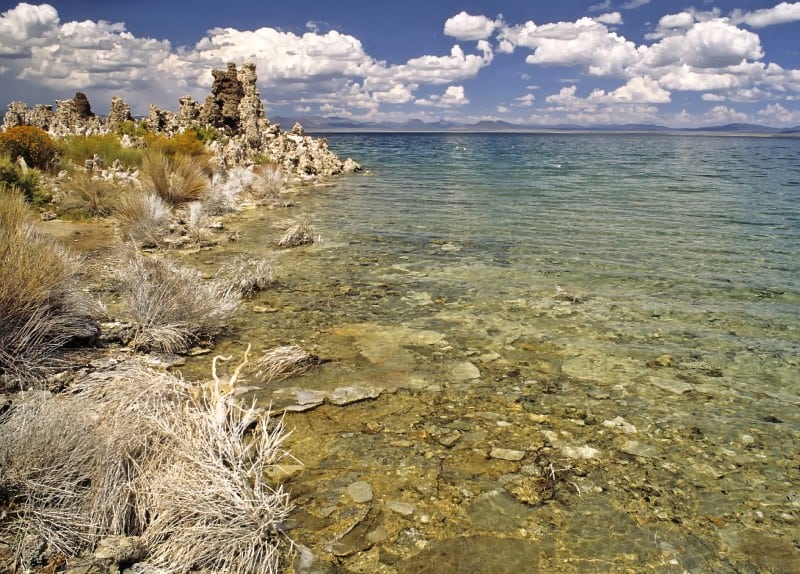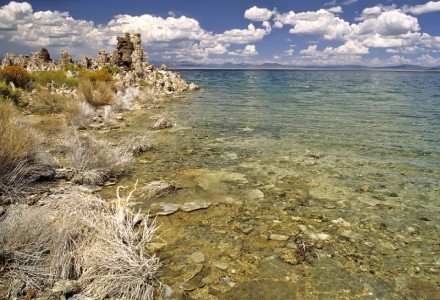
Mono Lake Facts
- The relatively simple term of Mono Lake represents the name of a particularly impressive, and quite distinctive, body of water. Despite the comparative harshness of the surrounding environment, the site has a unique form of beauty all its own.
- The formation also has a highly unique history, extending far back into antiquity. In more modern times, ancient Native Americans, especially the Kutsadika’a tribe of the Paiute Nation, knew of and lived around the truly remarkable site.
- Much later, European explorers later discovered it while venturing into the area in the 1880’s. At that time, Edward S. Dana and Israel C. Russell provided the first recorded description of the lake and some of its extremely unique geological formations.
- Beginning in the year 1913, however, the city of Los Angeles began diverting water from the lake. This action had the unfortunate, but not surprising, effect of threatening the fragile and unique alkaline ecosystem existing there.
- Later, though, in 1994, a wonderful win for the environment and those who support its preservation occurred. At that time, a newly strong conservation movement succeeded in halting any further diversion of the remarkable waters of Mono Lake.
- Since that time, water levels have begun to slowly climb back toward historic levels. They’ve not yet reached them, though. As a result, exposed shorelines continue to be a source of alkaline dust that can be carried aloft by strong winds in the region.
Related Articles
Lake Nakuru Loktak Lake Plitvice Lakes
Mono Lake Physical Description
The eerily beautiful Mono Lake actually forms part of a large basin with no outlet to the ocean. This basin originally formed via the actions of geological forces that took place over the past five million years. The lake itself formed approximately 760,000 years ago.
The steady runoff from enormous salt deposits in the region has made this body of water extremely alkaline in nature. The site also continues to remain somewhat geologically active, with the most recent eruption occurring just over 350 years ago.
That eruption further formed another remarkable feature within the lake itself. That’s a small island bearing the name of Paoha Island. But is marvels do not end there, since numerous amazing limestone towers appear all along the perimeter of the incredible lake.
Mono Lake also boasts some impressive physical statistics. Presently, the site covers an area of roughly 70 sq mi (181 sq km). Its maximum depth currently sits at nearly 600 ft (183 m), and the surface sits at an altitude of 6,380 ft (1,945 m) above sea level.
Mono Lake Location and Ecosystem
The eerily magnificent body of water known as Mono Lake formed in an area of the world already well known for its geological splendor. To the surprise of many, given its unique nature, the lake formed in what now constitutes California, in Mono County.
More precisely, this itself forms a state in the United States, in North America. This fact may surprise many people, given the standard image of that region of the country. However, the area also has some desert regions, one of which serves as home to this site.
Despite being part of a desert environment, Mono Lake serves as home to a thriving ecosystem. Fish cannot live in these waters, but Nature adapts. At the heart of this astonishing system is the presence of a vast population of a diminutive brine shrimp species.
These actually represent an indigenous creature that actually thrives in the lake’s alkaline waters. These tiny crustaceans, which measure about the size of a fingernail, remain inedible to humans. Numerous shorebirds, however, easily and frequently thrive on them.
An enormous volume of microscopic algae also lives in the lake, sometimes creating a dramatic effect. The presence of such a quantity of algae has the unfortunate effect of occasionally turning it bright green in color. The native crustaceans feed on the algae.
The enormous quantities of these invertebrates, numbering as many as six trillion, populate the lake and provide an essential food supply for many shorebirds during their migrations. Each year, as many as two million of them pause at Mono Lake to rest and feed.
Features Sharing Its Region
Death Valley New Year’s Island Yosemite Falls
Check out our other articles on Earth’s Many Magnificent Marsupials, Black-and-white hawk-eagle, Namib Desert, Regal Birdflower, Harbor Porpoise, European Mantis, Draco Volans

